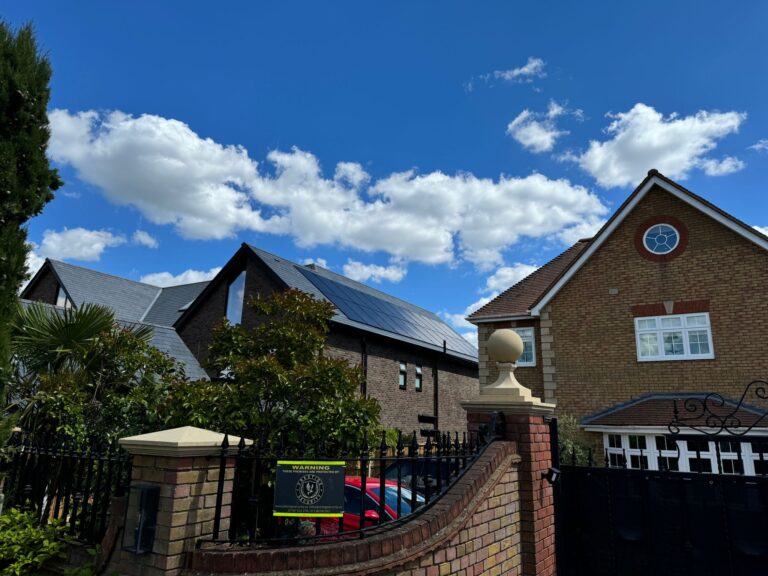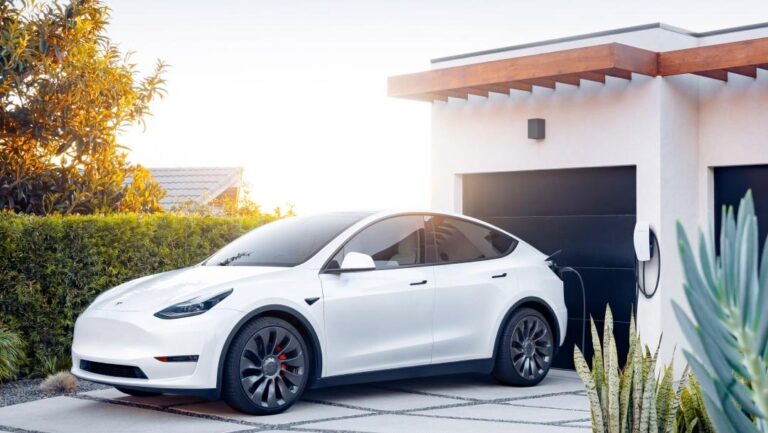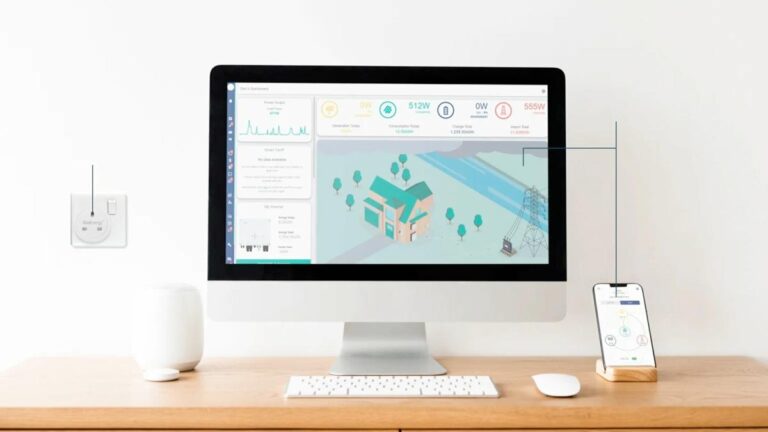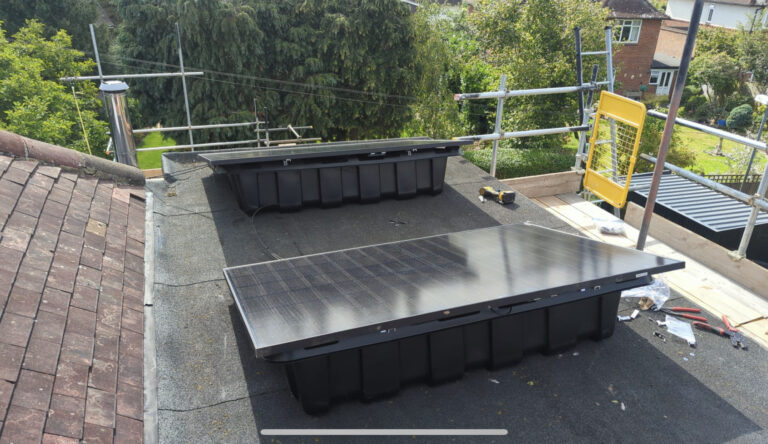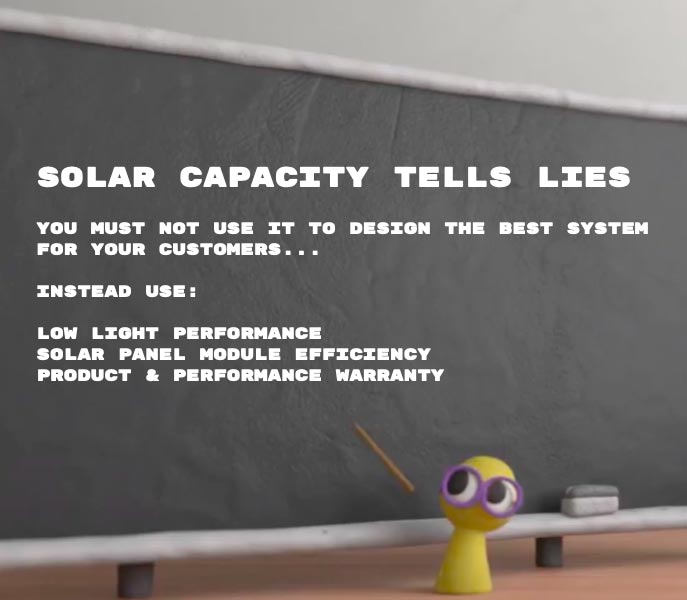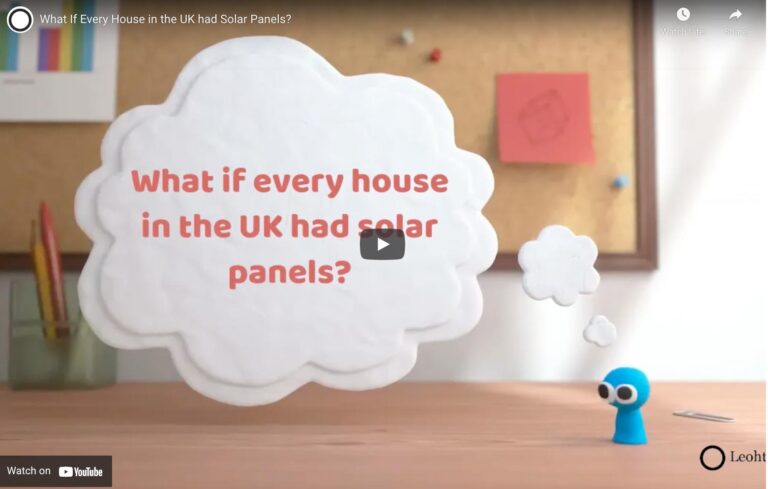How much is your average monthly electricity bill?
Do you have any heavy loads in the household?
Such as an EV, heat pump or swimming pool?
Do you have an electric vehicle?
Charging for free never gets old!
Do you have a heat pump? (Air or ground)
Do you have a swimming pool?
Perfect match for solar – high electricity usage at the same time as high solar generation.
Do you have electric heating?
Exports from the spring/summer can pay for higher usage in the winter. Generate more than you consume and your bill may go negative.
Your results
Estimated electricity consumption
0 kWh
0 solar panels to generate
50%
of your current electricity usage
0 solar panels to generate
100%
of your current electricity usage
How many solar panels do I need?
Most domestic installations fall between 6 – 24 solar panels.
You will need 10 solar panels to generate the equivalent amount of electricity that an average home uses per year.
You are not limited to a 4 kW solar panel system.
Turn 1 kWh of exported solar energy into 2 kWh with a smart off-peak electricity tariff.
Inteligent inverters and batteries from GivEnergy and Tesla can supplement your solar generation using off-peak electricity.
Request a bespoke solar design & quote today!
- Own your electricity supply
Increase your self-sufficiency - Cut electricity bills by up to 100%
- Proven to add value to your home by increasing your EPC
- Low-risk passive investment
- Offset your impact on the environment
How much of your electricity usage are you looking to offset?
To make a rough estimate we can assume that for every Watt of solar panel capacity installed, you will generate 0.85 kWh of electricity per year. (Yearly generation needed/0.85) / solar panel capacity (390W) = solar panels required.
If you install 12 x 390W solar panels = 4680W solar panel capacity.
As a rough estimate; 4690 x 0.85 = 3978 kWh electricity generated per year.
Using this rough calculation as a guide, you can estimate how many solar panels you will likely need to offset 100% of your electricity consumption. (Yearly generation needed/0.85) / solar panel capacity (390W) = number of solar panels required.
To get an accurate assessment of how much energy your home could generate request a free design today.
Solar and battery storage could provide up to 100% of your electricity usage throughout the year
If you have a smart meter, a time charging capable hybrid inverter and battery storage it’s possible to use all of the solar energy generated to power your home throughout the year, by exporting excess energy in the summer to pay for topping up the batteries in the autumn/winter (Octopus Go pays 5.5p/kWh for units exported and charges 5p/kWh for electricity imported between 00:30 – 04:30).
Expect ‘time of use’ tariffs to become more popular as more smart meters are rolled out nationwide.
If you use 5000 kWh per year you’ll need to install 15 solar panels.
5000/0.85 = 5882W (solar capacity required using the formula above).
5882/390 = 15 solar panels needed to offset 100% of your electricity usage.
If you use 6000 kWh per year you’ll need to install 18 solar panels.
6000/0.85 = 7058W (solar capacity required).
7058/390 = 18 solar panels needed to offset 100% of your electricity usage.
If you use 7000 kWh per year you’ll need to install 21 solar panels.
7000/0.85 = 8235W (solar panel capacity required).
8235/390 = 21 solar panels needed to offset 100% of your electricity usage.
If you use 10,000 kWh per year you’ll need to install 30 solar panels.
10,000/0.85 = 11,764W (solar panel capacity required).
11,764/390 = 30 solar panels needed to offset 100% of your electricity usage.
Homes with high electricity usage
At higher levels of usage, it’s harder to fit enough solar panels on your roof to offset 100% of your usage.
If this is the case, you may want to consider a ground-mounted array or build a ‘solar canopy’ as a stand-alone system or to supplement your on-roof solar if offsetting 100% of your usage is your primary goal.
The benefit of a ground-mounted array is that it’s often cheaper per Watt and easier to install – no scaffolding required.
You’ll be generating and using more energy so payback is often faster.
You will still get paid the Smart Export Guarantee for solar installations up to 50kW in size.
Your future electricity usage?
When installing solar panels it is always worth going as large as possible.
Your usage may increase over time and therefore need more generation to offset your usage.
The marginal cost of adding solar panels to an array is much lower than the first module once you have already paid for the inverter/labour/scaffolding/roof mounts etc.
How much will your electricity usage increase?
Electric car.
Expect your yearly consumption to rise by 0.25 kWh per mile driven.
For example,
If you drive your car for commuting and drive 14,000 miles per year.
You can expect your electricity usage to increase by 3,500 kWh per year if charging at home.
Heat pump (air-source and ground-source).
If you are required to switch to a heat pump from gas heating, we can calculate how much additional electricity will be required.
No new gas boilers can be sold from 2025 and 19 million UK homes will have to switch to heat pumps by 2035.
An average 3/4 bedroom home uses 12,500 kWh of gas to heat a home (source).
The efficiency of heat pumps is measured by the ‘coefficient of performance’ or COP. A COP of 3 means the heat pump produces 3 units of heat for every one unit of electricity. (Source).
Air-source heat pump:
COP 3.0: 12,500 kWh/3 = 4166 kWh of electricity to replace gas heating.
Ground-source heat pump:
More efficient than an ASHP, COP = 4.0, can be as high as 5.0
COP 4.0: 12,500/4 = 3125 kWh of electricity to replace gas heating.
Conclusion
How many solar panels you need to offset your usage is fairly easy to calculate. Either by using our rough estimate above or by requesting a free solar panel design You may also want to consider how much electricity you are going to use in the future and work out how many solar panels you will need under different circumstances.
We can also tell you the maximum number of solar panels that you can fit onto your roof which is usually the constraint that affects most people.

